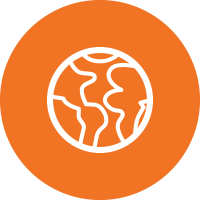
Sources & Methods
Methdodology of our assessments is based on a comprehensive trend analysis of information using a variety of sources, including:
-
International Crisis Group monthly trend analysis from 2006 to 5/2020
-
ACAPS monthly report on humanitarian situation using Global Crisis Severity Index (GCSI) developed by INFORM
-
NYA International – reporting on Kidnap, Cyber Extortion and Piracy, Garda World Kidnap Risk map
-
Different indicators including: Fragile State Index, Freedom House Index, Global Peace Index (GPI), Global Terrorism Index (GTI)
We also follow a wide variety of information sources and services, including:
-
Stratfor, Nightwatch, Africa Confidentially, Oxford Analytica, Internationa SOS, Control Risks, Stockholm International Peace Research Institute (SIPRI)
-
Institute for the Study of War (ISW), Edinburgh Institute (EI), Critical Threats Project of American Enterprise Institute, Terrorism Research and Analysis Consortium (TRAC).
When assessing risks for humanitarian crisis and disasters we use the INFORM Global Risk Index.
-
INFORM simplifies a lot of information about risk. It uses 50 different indicators to measure hazards and peoples’ exposure to them, vulnerability, and the resources available to help people cope.
Components of Risks covered by INFORM

The INFORM Global Crisis Severity Index (GCSI) is an improved way to objectively measure and compare the severity of humanitarian crises and disasters globally. It can help us develop a shared understanding of crisis severity and ensure all those affected get the help they need.
-
The GCSI contains around 30 indicators that tell us about: the impact of the crisis itself, in term of the scope of its geographical, human and physical effects; the conditions and the status of the affected people, including information about the distribution of severity (i.e the number of people in each category of severity within a crisis); and the complexity of the crisis, in terms of factors that affects its mitigation or resolution.
-
The results provide a categorisation of 1-5 for each component of the GCSI and access to the underlying data and calculations.

HOW IT WORKS
INFORM results are available at www.inform-index.org, where you can: download a spreadsheet with all the results, calculations and source data; view and print country profiles; explore the data interactively; and find out more about how INFORM works and how you can use it.
HOW IT IS DEVELOPED
INFORM is a collaboration of the Inter-Agency Standing Committee Reference Group on Risk, Early Warning and Preparedness and the European Commission. INFORM partners include: UNHCR, UNICEF, UNISDR, WHO, WFP, UNDP, UNEP, UNDPA, OECD, GFDRR, IOM, UN WOMEN, UNU-EHS, ACAPS, FAO, START Network, iDMC, IRC, OCHA, USAID and UKAID.

